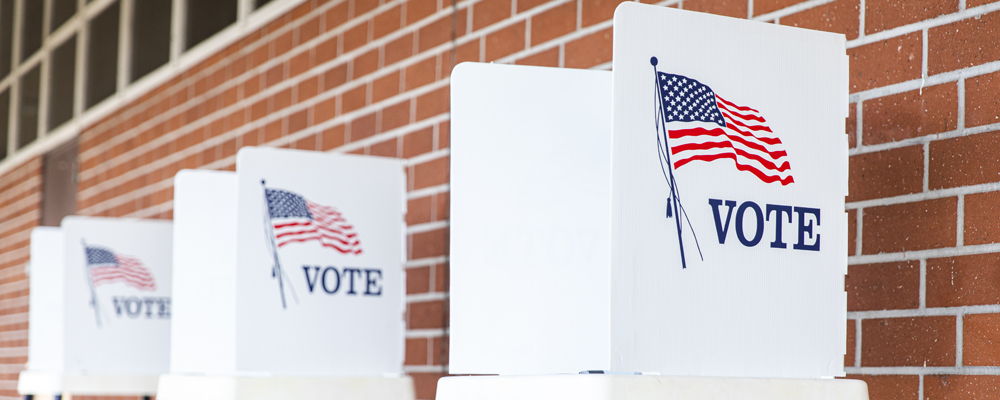The recent elections in November 2021 saw Virginia vote for governor, lieutenant governor, and attorney general. Maryland and North Carolina voters cast their ballots for municipal offices. Though local and statewide elections generate less buzz than a Congressional midterm election, to say nothing of Presidential elections, these races stand to impact nonprofits in more direct ways; namely, government funding.
In Virginia, the elections leaned heavily Republican in a state that’s been mostly Democratic for years. As the two parties can have distinctly different viewpoints on finding solutions for social issues and the humanities, it’s a toss-up of how local nonprofits will be affected. Legislative priorities will undoubtedly shift according to the controlling party.
In Virginia, for example, newly elected Governor Youngkin, focused on education in his campaign. Together with the Lieutenant Governor, it’s likely that women’s health issues will become a focal point in the next two years. The two parties will have to work together on big ticket items, though; Democrats still control Virginia’s Senate.
Historically, Democrats tend to favor more of a government-funded safety net, which can be seen on a national scale in Washington. Certain administrations also provide different types of grant funding through various federal or state agencies, and it’s possible even off-year elections like this one can affect the amount of grants provided.
Republicans, on the other hand, tend to favor less government involvement with the belief that individuals would be freer to make choices regarding how their money is allocated.
Is there a political party that’s better for nonprofits? The verdict is still out.
Which Political Party Is Better for Nonprofits?
In-depth research from 2018 shows that while Republicans tend to give more to charity, where the money actually goes remains unclear because much of the donations go to private institutions.
In other words, donations to local charities like food banks or animal shelters can more easily have demonstrated impacts, whereas the outcome of a donation to a foundation, school, or religious organization is much harder to track. The motives for these types of donations are also less clear than those derived from wanting to improve a specific condition for a population segment.
Red counties did have higher rates of charitable giving; however, a deeper dive found that Democrat-led counties tended to have higher taxes. This, in turn, created more of a safety net and collective support for nonprofit and charitable missions. While Republican-led counties do historically have higher charitable rates, the private philanthropy does not match government funding in counties where taxes are higher.
In other words, it’s a give and take.
The study did find evidence that when political discord is at its highest, charitable giving is at its lowest. “Political competition decreases giving,” according to the report summary in Nonprofit Quarterly.
Yet, off-year elections aren’t necessarily tied to federal legislation. “Congress responds to elections but those responses are not immediate,” according to analysis by the Government Affairs Institute at Georgetown University.
What Can Nonprofits Do Ahead of 2022 Midterms?
Next year, all House members, about a third of the Senate, and most state legislatures will be on the ballot. Virginia just voted for a new governor, and Maryland and North Carolina will join most other states in a 2022 gubernatorial race. Looking ahead, there are steps that every nonprofit can take to stay engaged and informed and ensure that whoever is on the ballot is aware of the policies that will best help the local communities.
Consider:
- Researching candidates who can best support the organization’s mission and community.
- Assess how the community and organization stakeholders want to be informed of election updates. Decide which issues the organization will focus on and when and how communications will be issued.
- Keep donors and other volunteers updated on issues that affect the organization, and set the tone for 2022. What’s the message the organization wants to promote?
- Encourage employees to serve on local commissions and Boards. This increases their civic engagement and also gives them opportunities to stay in front of policymakers.
- Stay in front of local and state elected officials. Make the organization’s needs known, and support any ask with data.
It can be difficult to predict exactly how nonprofits will be affected, as impact can depend on factors like administrative priorities, which sector the nonprofit serves, available funding, and more. In Virginia, more is at stake this year with top-level state positions having been decided; next year, neighboring states will face the same situation. As nonprofits rely on government funding, election years can create certain levels of uncertainty and planning difficulties.
We will continue to monitor election impacts and the state of the nonprofit sector. Bo Garner, CPA, MBA, Partner and Team Leader of PBMares’ Not-for-Profit practice, can answer questions about short- or long-term planning, fundraising, government relations, and finance.





